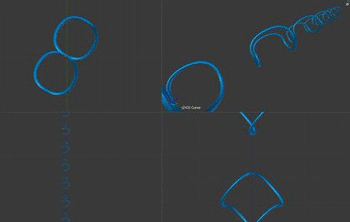The living being had no need of eyes when there was nothing remaining outside him to be seen; nor of ears when there was nothing to be heard; and there was no surrounding atmosphere to be breathed; nor would there have been any use of organs by the help of which he might receive his food or get rid of what he had already digested, since there was nothing which went from him or came into him: for there was nothing beside him. Of design he was created thus, his own waste providing his own food, and all that he did or suffered taking place in and by himself. For the Creator conceived that a being which was self-sufficient would be far more excellent than one which lacked anything; and, as he had no need to take anything or defend himself against any one, the Creator did not think it necessary to bestow upon him hands: nor had he any need of feet, nor of the whole apparatus of walking; but the movement suited to his spherical form was assigned to him, being of all the seven that which is most appropriate to mind and intelligence; and he was made to move in the same manner and on the same spot, within his own limits revolving in a circle. All the other six motions were taken away from him, and he was made not to partake of their deviations. And as this circular movement required no feet, the universe was created without legs and without feet. (source: http://en.wikipedia.org/wiki/Ouroboros)
Ouroboros is a greek word, and means “tail swallower.” The ouroboros is usually depicted in the form of a snake swallowing its tail, and is usually circular, although it is sometimes depicted in a lemniscate shape. It originated in Egypt as a symbol of the sun, and represented the travels of the sun disk. In Gnosticism, it was related to the solar God Abraxas, and signified eternity and the soul of the world.
In alchemy, the ouroboros represents the spirit of Mercury (the substance that permeates all matter), and symbolises continuous renewal (a snake is often a symbol of resurrection, as it appears to be continually reborn as it sheds its skin.), the cycle of life and death, and harmony of opposites. A double ouroboros (two creatures swallowing one another) in alchemy signifies volatility. Spiritually, it signifies the balance of the upper and lower natures.
The Ouroboros appears in many other cultures and settings as well…the Serpent Jormungandr of Norse legend, who encircled the world, and guarded Yggdrasil, the Tree of Life, is often depicted as an ouroboros. The Aztec serpent God Queztacoatl was depicted similarly, and Chinese alchemical dragons have both similar shapes and meaning. (source: http://symboldictionary.net/?p=1083)
The mathematical symbol for infinity is known as the lemniscate. It was devised in 1655 by mathematician John Wallis, and named lemniscus, ribbon, by Bernoulli about forty years later. The symbol is patterned after the device known as a mobius (named after a nineteenth century mathematician) strip. A mobius strip is a strip of paper which is twisted and attached at the ends, forming a two dimensional surface.
... and finally an 'Ouroboros' spiralling upwards seen from the Top/Front/Side/Perspective.
(See topic Spiralling Figure 8 for more about this concept)








